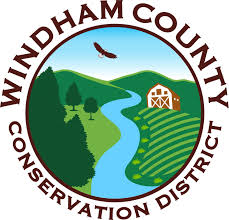Jumping Worms
Did you know all earthworm species are non-native to Vermont? While many species of worms have been established for decades or centuries, a new invasion by jumping worms has begun throughout the region. This has quickly become a major challenge, particularly for gardeners. While there are no effective control methods developed at this time, we have a pretty good idea on how to prevent the introduction of jumping worms.
Asian Jumping Earthworm
Wisconsin Department of Natural Resources
There are currently no viable jumping earthworm control methods, although research is continuing and we can prevent their spread:
- Do not buy or use jumping worms for bait, vermicomposting, or gardening.
- When purchasing bulk mulch or compost, use a reputable producer that has heat-treated the material to a temperature of 130°F for at least three days to destroy the cocoons or purchase bagged mulch.
- Check your property for jumping earthworms using a mustard pour (it won’t harm your plants!). Mix a gallon of water with 1/3 cup of ground yellow mustard seed and pour slowly into the soil. This will drive any worms to the surface where you can easily remove them.
- Cocoons are sensitive to heat and can be destroyed with clear plastic solarization; in late spring or summer, cover moistened soil with a sheet of transparent polyethylene fortwo/three weeks or until the soil temperature exceeds 104°F for at least three days.
- Be careful when sharing and moving plants; always check for worms and know where your plantings come from; buy bare root stock when possible.
- If you have a small population of jumping worms, handpick and destroy them by bagging them and throwing them in the trash, or place them in a bag and leave out in the sun for at least 10 minutes; then throw the bag away.
- Research is currently being conducted on invasive worms at the University of Wisconsin and several practices do show some promise of control. Abrasive materials such as biochar(ground up charcoal) and diatomaceous earth (fossilized diatoms) may show some promise in killing adult jumping worms. Incorporate one of these products into the infested soil to a depth where the worms are located; worms that come in contact with the materials will be adversely affected.
- If you have jumping worms, report it (www.nyimapinvasives.org) and avoid moving plants or soil from your yard.
The district hosted a webinar on jumping worms, which you can view online here.
